
Transcription
Makhaarij & SifaatPrepared by: Shaykha Dina Essam
Assalamu Alaykum wa Rahmat Allah wa Barakatuh,Dear Reader,One of the best acts of worship in Islam is reciting the Quranbeautifully and smoothly.The Prophet (Salla Allahu Alaihi wa Sallam) said:"Verily the one who recites the Qur'an beautifully, smoothly, andprecisely, he will be in the company of the noble and obedientangels. And as for the one who recites with difficulty, stammeringor stumbling through its verses, then he will have TWICE thatreward." [Al-Bukhari and Muslim]Ever since teaching Quran to non Arabic speaking students, Irealised the need to write a manual which would equip thestudents to recite the holy Quran beautifully and smoothly.Janat Al Quran books aim to make learning the Quran easy for allstudents whether adults or children, beginners or advanced level.The books explain the Tajweed rules in English while the termsremain in Arabic with a translation for each term.The books explain the Tajweed rules according to the narration ofHafs from the Imam Asem in the way of Ash-Shaatibiyah.
Vjannatk/My sincere thanks go to my teachers who have taught me thescience of Tajweed and the Quran recitation in the ten Qira'at.Special thanks to my sisters in Islam who helped me to enhancethe books.Message to the students:Learning the Quran with a qualified teacher is of paramountimportance. Correct recitation of the Quran can only be achievedthrough regular practice of the Quran with a teacher who cancorrect the mistakes.Reciting the Quran on a daily basis is essential so the student cancorrect the mistakes pointed out by the teacher. Regular duas andpatience are important to make your Quran journey easy and fullof Barakah.Message to the teachers:Kindly be reminded to always renew your intention for teachingthe Quran and to ensure the work is done solely for Allah's sake.It is important that we always motivate the students and inspirethem to love the Quran.May Allah Subhanahu wa Ta'la accept all our good deeds toplease Him. May Allah unite us all in Jannah with his prophet SallaAllahu Alaihi wa Sallam.Dina Essamwww.jannatalquran.com
What some Shaykhs and teachershave said about the bookThe Quran is the word of Allah which was revealed to the heart of theprophet SAW with an Arabic tongue. It was revealed Muratal (recitedbeautifully with Tajweed), that is the way it should always be recited andlistened to so the listener can be in the beautiful Jannah of the Quran.Jannat Al Quran books is a fantastic attempt from Shaykha Dina to getthe reciter reach the Jannah of the Quran in order to make the Quran apath to the Firdaws in the hereafter in Shaa Allah. The Tajweed rules areexplained with simplicity and clarity for anyone to understand. MayAllah SWT reward the author of the book and the learners of the Quran.Shaykh Samir Abd-AlazeemAl-Azhar UniversityI would like to thank Shaykha Dina Essam for this great effort. We havealways acknowledged this Khair and hard work from her in servingAllah's religion and His holy book.I have read Jannat Al Quran books and found a good organisation for allthe books and an easy explanation for all the Tajweed rules. Having allthe Tajweed rules in those set of books makes the reader or theknowledge seeker who has learned the rules able to recite the Quranprecisely with Allah's will. May Allah grant you success.Shaykh Tamer Ibrahim,Al-Azhar University
What some Shaykhs and teachershave said about the bookIn the name of Allah who has revealed the holy book. I ask Allah to grantsuccess to everyone who serves His religion, and give Barakah to JanatAl Quran books, this great work, that serves Allah's book.These books give the chance to non Arabic speakers to understand thescience of Tajweed of His book, for what they contain of valuableknowledge and simple method of explanation.Sincere thanks to those who have helped in getting this book to thelight in this way that is suitable for serving Allah's book.I ask Allah to grant success to the writer and the learners of thesebooks. May Allah grant Hidayah (guidance) to people through thelearners of His book and may they become the best of people as theprophet said, "The best among you are those who learn the Qur'an andteach it.".Mostafa IbrahimAl-Azhar UniversityThe structure of Jannat Al Quran books will allow the student tosuccessfully study the highly complex science of tajweed with simplicity.I would recommend it for sure!Ayah Yussuf TeamaAl-Azhar University
Table of ContentsPoints of Articulation of the Arabic letters (Makhaarij).iHow do humans produce sound?.3The Speech System.4The empty space in the throat and mouth (Al-Jawf). 6The Throat.9The Tongue.The deepest part of the tongue.The middle of the tongue.The sides of the tongue.The tip of the tongue.1416182124The Lips. 33The Nasal Cavity. 37Exercises. 38The Qualities of the letters (Sifaat). 43The Permanent Qualities with Opposites. 45AI-Hams/AI-Jahr.45Ash-Shiddah. 46At-Tawassut. 46Ar-Rakhawa. 49Al-lstilaa/ Al-lstifaal. 51AI-ltbaaq/AI-Infitah. 52AI-ldhlaq/AI-lsmat. 54
VjannatTable of ContentsThe Permanent Qualities Without 7575859596060Strong & Weak Qualities. 62Summary. 64Exercises. 66www.jannatalquran.com
First SectionPoints of Articulation of the Arabic letters(Makhaarij)dlj szllHow do humans produce sound?The Speech Systemi Vjannat
AVjannat7?Points of Articulation of the Arabic letters(Makhaarij)Arabic is a unique language in which each letter has acertain point of articulationfrom where it ispronounced and cannot be pronounced from any otherpoint of articulation. If the letter is not pronounced fromthe correct point of articulationthen the sound ofthe letter is incorrect. It can then be confused with oneof the other letters.This is why we should be careful when it comes toreciting the Quran, as changing the letter changes themeaning of the Ayah.Example:The wordmeans heart, the word 1jS means dog. Soif you change 3 tod the meaning will change.What is the purpose of learing the Makhaarij of theArabic language?The purpose of learning the Makhaarij of the Arabiclanguage is to make the reciter proficient in reciting theQur'an by observing the correct pronunciation of everyletter, without any exaggeration or deficiency. Throughthis, the reciter can recite the Qur'an according to theway of the prophet peace be upon him who received itfrom Jibreel who received it from Allah Subhanahu waTa'la in the classical Arabic language.1
Points of Articulation of the Arabic letters(Makhaarij)Definitions:The articulation point: &kzJiIt is the place from where a letter is pronounced, makingits sound different from the sound of other letters.Using the right articulation point of a letter is necessaryto utter the letter correctly.The sound:It is a group of vibrations and waves carried in the air tothe human ears.The letter: dj 3\It is a sound that is pronounced from a specificarticulation point.To know the point of articulation of any letter, put ahamzah before the letter. For example if you want toknow the point of articulation of the letter v, puthamzah before it d .If the Quran reader pronounces each letter from itsproper articulation point, with all of the letter'scharacteristics, and can read each letter properly byitself, and in conjunction with other words, he has thenachieved high quality in reading the Quran.
AVjannat7?How do humans produce sound?As we exhale, the air exits the lungs and creates anairstream which makes the vocal chords in the larynxvibrate. These vibrations then travel through the air tothe human ears, where they are transformed intosounds.How do humans produce 28 different sounds in theArabic alphabet, using only 2 vocal chords?The speech system is divided into five major areas.Each letter has one articulation point, which is used toproduce the sound of the letter.Some articulation points have more than one spot whichproduces different sounds. There are 17 differentarticulation points to pronounce the 28 Arabic lettersand the Madd letters.For a letter to be pronounced, there has to be a collisionof two parts of the speech system. However this is notthe case for the Madd letters, where you will have tocreate a distance to the colliding parts.3
The Speech SystemThe following are the five major areas of the speechsystem:1- The empty space in the mouth and throat: It has onearticulation point for the three letters of Madd.2- The Throat: It has three articulation points for sixdifferent letters which are pronounced from thedeepest, middle, and closest part of the throat.3- The Tongue: It has ten articulation points for eighteenletters.4- The Two Lips: The lips have two articulation points forfour letters.5- The Nasal Cavity: It is a large air-filled space aboveand behind the nose, in the middle of the face. It is thecontinuation of both nostrils. There is one articulationpoint, that of the Ghunnah.
The Speech SystemUpperPalateHard PalateSoft PalateUvulaGumsThe TwoLipsTeethThe emptyspacein the mouthand throatThe points of articulation of the Arabic letterswill be explained in detail.
i ri! !Second SectionThe empty space in the throatand mouth (Al-Jawf)The ThroatThe TongueThe LipsThe Nasal Cavityt. Vjannat
The empty space in the throatand mouth (Al-Jawf)The empty space in the mouth and throat is a major areaand an articulation point at the same time. The threeMadd (lengthened) letters originate from this generalarea, these letters are: Waaw Sakinah preceded by a Dhammah Yaa Sakinah preceded by a Kasrah Alif preceded by a Fathah. (i)These three Madd letters do not have a specific placethat they are pronounced from, unlike all the otherletters. Their sound is produced from the point ofarticulation of the previous letter.When pronouncing the Alif, the sound should be rising.If the Alif is preceded by a heavy letter, the Alif shouldbe heavy, whilst if preceded by a light letter, it will belight. Example: Jib - oLjWhen pronouncing the Waaw, the sound should bestraight (neither falling nor rising), in addition to circlingof the lips. (2) Example:When pronouncing the Yaa, the sound should be falling,in addition to raising of the middle part of the tongue.Example: jLlf.Note (1): Alif is always preceded by a fathah.(2): The sound should come from the mouth not the nose.6
The empty space in the throatand mouth (Al-Jawf)The Madd letters are prolonged two harakasif they are not followed by a hamzah ora sukoon.Waaw MaddAlif MaddYaa Madd7
The empty space in the throatand mouth (Al-Jawf)Common mistakes:1- Pronouncing the Alif heavy where it should be light.Examples:jllll-jl ill2- Pronouncing the Alif light where it should be heavy.Examples:3- Not emphasising the Dhammah on the letter beforethe Waaw Madd, when pronouncing the Waw Madd.Example:4- Not emphasising the Kasrah on the letter before theYaa Madd, when pronouncing the Yaa Madd.Example:5- Pronouncing the Waaw Madd or the Yaa Madd fromthe nostrils with Ghunnah. To correct this mistake, pinchyour nose and say the Madd letter; if the soundbecomes muted whilst pinching your nose, or if itsounds like one has a cold, it is indeed coming throughthe nose, and is therefore incorrect. The sound needs tobe focused and pronounced through the mouth.Example: ds&u
A vjannattvThe ThroatThere are three points of articulation in the throat andeach point has two letters emitted from therein. Eachpoint of articulation has two spots which producedifferent sounds.1- The deepest part of the throat2- The middle part of the throat3- The closest part of the throat (closest to the mouth)closest partof the throat
A VjannatThe ThroatThe Makhraj of the throat letterselk -10
The ThroatThe deepest part of the throat:OjjQjb “These letters are pronounced from the deepest part ofthe throat which is the furthest away from the mouthand the closest to the chest, mThe middle part of the throat:These letters are pronounced from the middle part ofthe throat which lies half way in between the beginningand the end of the throat. (2)The closest part of the throat: These letters are pronounced from the closest part ofthe throat which is the beginning of the throat, or theclosest to the mouth, p)Note (1): The English (H) is pronounced at a position higher in the throat thanthe Arabic .u (2) : The two letters pronounced from the middle of the throat are not inthe English language so you need some practice to succeed in pronouncingthem correctly. The first step is to get used to using this part of the throat.Think of the throat squeezing against itself from the middle, and try topronounce the letters from that point. Listening to a Quran reciter and tryingto copy his pronunciation will work well insha'Allah.(3) You should practice using this part of the throat, & is pronouncedfrom the area used for gargling, .u- is pronounced from an area deeper thanthe11
The ThroatCommon mistakes:1- Pronouncing theheavy, it should always be light.Example: j lil2- Not pronouncing theclearly when stopping on itat the end of a word.Example: iUJJI3- Pronouncing theheavy, it should always be light.Example:4- Not pronouncing thebyclearly when it is precededor »i».Examples:—5- Not pronouncing the clearly when stopping on itat the end of a word.Example: SjIrs6- Pronouncing the as if it isExample:7- Pronouncing the heavy, it should always be light.Example: \ yos.
4V Vjannat7?The ThroatCommon mistakes:8- Pronouncing the & as if it is d is.Example:js.9- Exaggerating the heaviness of the & when it hasKasrah.Example: Ji10- Pronouncing thelight, it should always be heavy.Example:11- Exaggerating the heaviness of theKasrah.Example:12- Pronouncing the a* as if it is sia .Example: llcJl13when it has
The TongueHard PalateSoft PalateGumsThe middle ofthe tongueThe tipof thetongueThe deepestpart ofthe tongueBackSideFrontSideThe edges (sides)of the tongue14
The TongueThere are ten articulation points for eighteen letters.These ten articulation points are distributed over fourareas of the tongue:1- The deepest part of the tongue.2- The middle of the tongue.3- The edges (sides) of the tongue.4- The tip of the tongue.The roof of the mouth is divided into 2 parts:- The hard palate; the top roof area, near the teeth.- The soft palate; deepest part of the roof, near the throat.The tongue touches the gums or the hard or the softpalates to produce different letters.Letters1vils2lsU3»t - Cfri - fi?-45f*1iU 67A)8.It - Jb - .139sU - lj -10.Ife-Jb-.G15
VjannatThe deepest part of the tongueHard PalateSoft Palate16
The deepest part of the tongue JldThis letter is articulated from the deepest part of thetongue and what lies opposite, which is the roof of themouth in the area of the soft palate. 31*This letter is articulated from the deepest part of thetongue and what lies opposite, which is the roof of themouth in the area of the hard palate. This letter is closerto the mouth than the ijis.Common mistakes:1- Changing the ijis to tic and the dstf to jisExample: CJS- — CJs2- Pronouncing the jis light when it has Kasrah.Example: JsJl3- Pronouncing the d is heavy when it is preceded by aheavy letter.Example: djlo4- Excessive air whilst pronouncing the «ji§.Example: dill17
The Middle of the Tonguemiddlee tongueThe middleof the tongueThe rocof themouth
The Middle of the TongueThe middleof the tongueThe roofof themouth- qJui-These three letters are pronounced from the middle ofthe tongue and what lies opposite, which is the roof ofthe mouth, (i)This Yaa is not the Yaa Madd.Note (1): There is a difference between the pronunciation of the Arabic and the English (j and sh). The English (j) and (sh) are pronounced from thefront of the tongue and the hard palate.19
The Middle of the TongueCommon mistakes:1- Pronouncing the likeExample:2- Not making Qalqalah when pronouncing theExample:3- Pronouncing the from the tip of the tongue andmaking it sounds similar to theExample: jlLaiJI 6*4- Pronouncing the heavy when it is followed bya heavy letter.Example: lLki5- Excessive air whilst pronouncing the 4Example:
The Sides of the TongueThe frontedge ofthe tongueThe gumsof the fronttwo upperincisorsLight LaamThe frontedge ofthe tongueThe gumsof the fronttwo upperincisorsHeavy Laam21
The Sides of the Tongue 4This letter is pronounced from the front sides and thetip of the tongue touching what lies opposite to them,which are the gums of the two top front incisors, thetwo top lateral incisors, the two top canines, and thetwo top premolars, (i)To pronounce the heavy Lam, the reciter should raisethe back of the tongue towards the upper palate.Common mistakes:1 - Pronouncing the from the tip of the tongue.Example: jj2- Making Idghaam for the and the following letter,especially when it is followed by jyarticulation of theas the point ofis close to that of theExample: ollJpi3- Pronouncing the heavy where it should be light.Examples: UJI Js. — JjJjl4- Making Qalaqalah when pronouncing Saakin.Examples: 6&JlNote (1): There is a difference between the pronunciation of the Arabicandthe English (I), the English (I) is pronounced by placing the tip of the tongue onthe roof of the mouth, just behind the teeth.22
The Sides of the TongueaU This letter is pronounced from one or both back sides ofthe tongue touching the molars and the gum area nextto the molars.Common mistakes:1- Using the tip of the tongue and the gums of the twofront teeth to pronounce the at* instead of the backsides of the tongue, it will sound like a heavy jia.Example:2- Making Qalqalah.Example: llalj3- Using the tipof the tongueand the edgesof the twofront teeth,it will soundlike .lbExample: JlljlThe gumsof the fronttwo upperincisorsThe back edge of the ton23
The Tip of the Tongue03 This letter is pronounced from the tip of the tongue andthe gums of the front two upper incisors,ispronounced slightly behind the gums (towards theupper palate) in comparison to the articulation point ofthePart of the sound comes from the mouth whilstthe other part comes from the nose.Common mistakes:1- Not pronouncing the033clearly when stopping on itat the end of a word.Example: 1152-Making Qalqalahwhen the433isSakinah.Example:The gumsof the fronttwo upperincisorsThe the tipof the tongue24
The Tip of the TongueThe hard palateclose to thegums ofthe front twoupper incisorsThe tip ofthe tongueHeavy RaaThe hard palateclose to thegums ofthe front twoupper incisorsThe tip ofthe tongueLight Raa25
The Tip of the Tongue«L This letter is pronounced from the tip of the tongue andthe hard palate close to the gums of the front two upperincisors. There should be no trilling of the tongue whenpronouncing this letter. One should physically feel thetongue hit the gums of the two upper front incisors, asthe English (r) is pronounced without the tonguestriking the gums of the front two upper incisors.Leaving a small space for the sound to run at the verytip of the tongue will help to pronounce the dj correctly.Common mistakes:1- Trilling of the tongue whilst pronouncing the letterwhich causes the letter to be pronounced multipletimes.Example:2- Making Dhammah whilst pronouncing the heavyd Examples:3- Not pronouncing the ,yi clearly when stopping on itat the end of a word.Examples: JLlI -
A VJannatThe Tip of the TongueThe gums ofthe front twoupper incisorsThe top sideof the tipof the tongueJb - c jack ofle tongueThe gums ofthe front twoupper incisorsThe top sideof the tipof the tongue27
AVjannatThe Tip of the TongueA3 - Jla - f-UoThese letters are pronounced from the top side of thetip of the tongue and the gums of the front two upperincisors, (further to the inside of the mouth). The back ofthe tongue is raised towards the upper palate topronounce »ik(UCommon mistakes:1- Pronouncing the at light.Example:JOas2- Pronouncing the jb heavy.Example: jjlo3- Pronouncing theheavy.Example:4- Pronouncing the jb as if it is as.Example: jjJI5- Not making Qalqalah when pronouncing the *it.Example: jk Ll6- Excessive air whilst pronouncing the at - jb - as.Example: jjh - g Jlj - SlLjlNote (1): There is a difference between the pronunciation of the Arabic jb & .band the English (t & d), The English (t & d) are pronounced from the tip of thetongue touching the gums of the front teeth which makes the sound slightlyheavy with excessive breath.28
A VJannatThe Tip of the TongueThe edgeof the fronttwo loweriSl)Back ofthe tongueThe edgeof the fronttwo lower29
«VVjannatThe Tip of the TongueThese letters are pronounced from the tip of the tongueand the edge of the front two lower incisors. A whistlesound should be heard when pronouncing these letters.The back of the tongue is raised towards the upperpalate to pronounce ilo. (1)Common mistakes:1- Pronouncing thelight.Example:2- Making Dhammah while pronouncing the ai*.Example: JLkJI3- Pronouncing the heavy.Example:4- Pronouncing the as if it is ij.Example5- Pronouncing the iij as if it isExample: cJjJj iSjNote (1): There is a difference between the pronunciation of the Arabic ij & jy. and the English (s & z), The English (s & z) are pronounced from the tipof the tongue touching the gums of the front teeth.30
The Tip of the TongueThe bottom edaeof the fronttwo upperincisors*15 - JISThe bottomof the fronttwo upperincisors31
The Tip of the Tongue*1 - JIS These letters are pronounced from the tip of the tongueand the bottom edge of the front two upper incisors.The back of the tongue is raised towards the upperpalate to pronounce »ikCommon mistakes:1- Changing the jis to ij.Example:2- Changing the 05 toExample: j s3- Not pronouncing the Bu heavy.Example:
The LipsThere are two articulation points for four letters.The first point of articulation is for the cii,the other oneis for the 3\3.»l3The bottom edge of the front two upper incisors touchesthe inner bottom lip.Common mistakes:1- The front two upperincisors touching thebottom lip lightly.Example:2- Changingthe 6is to V.Example:The bottomedgeof the frtwo uppThe inner bottom lip33
The LipssbCircling of the two lips without meeting completely.This Waaw is not the Waaw Madd.Common mistakes:Pronouncing theletter.Example: 4IJI33\3heavy when followed by a heavy
The LipsClosing thetwo lipstogether35
The Lips juo -Closing the two lips together.When pronouncing the , part of the sound comesfrom the mouth whilst the other part comes from thenose.Common mistakes:1- Pronouncing theheavy when followed by a heavyletter.Example:JbLJi2- Not making Qalqalah when pronouncing theExample:3- Pronouncing the heavy.Example: dAlki4- Making Qalqalah when pronouncing theExample:36
VjannatThe Nasal CavityIt is a largethe middleone of thethat of theair-filled space above and behind the nose inof the face. Each cavity is the continuation oftwo nostrils. There is one articulation point,Ghunnah.Ghunnah is a characteristic, not a letter. It is a character istic of Meem and Noon letters.37
i r! !Third SectionExercises
ExercisesMakharij1- Define the following:1- The articulation point2- The sound3- The letter2- Find 2 common mistakes when pronouncing thefollowing:1- The letters of Madd2- The throat letters34- cb “ ! 5- 6- jjj - »ij7- eb - jb -8- i lj ” cjy*1 ”9-1 0”- jii - tib- ftl)3- How to know whether you are pronouncing the WaawMadd or the Yaa Madd from the nostrils with Ghunnah?4- What are the four areas of the tongue?
ExercisesMakharij5- Complete the following:1- Arabic is a unique language in which each letter hasa certain.2- To know the point of articulation of any letter, put a.before the letter.3- There are . major areas of the speechsystem that are used to pronounce the letters.4- The empty space in the mouth and throat has onearticulation point for the letters.5- The Throat has . articulation points for sixdifferent letters.6-The Tongue has . articulation points foreighteen letters.7- The Two Lips have . articulation points forfour letters.8- ei & throat.are pronounced from.part of the9- The roof of the mouth is divided into 2 parts whichare.&.10is pronounced from . touchingwhat lies opposite to them, which are the gums of thetwo top front incisors, the two top lateral incisors, thetwo top canines, and the two top premolars.39
ExercisesMakharij5- Complete the following:11Topronouncethereciter.heavyLam,the12- iio is pronounced from . of thetongue touching the molars and the gum area next tothe molars.13is pronounced from the . of thetongue and what lies opposite, which is the gums ofthe front two upper incisors.14is pronounced from the . of thetongue and the gums of the front two upper incisors.15- ce- is pronounced from the tip of the tongue andthe top edge of the front two.incisors.16- When pronouncing eii the bottom edge of thetwo upper front teeth touches.6-Put ( */) for the true statement and (x) for the falsestatement and correct the mistake.1- The Nasal Cavity is a large air-filled space aboveand behind the nose in the middle of the face. ( )2- Waaw Sakinah preceded by a Dhammah is one ofthe letters of Madd. ( )3- The three Madd letters have a specific place that40
ExercisesMakharij6- Put ( /) for the true statement and (x) for the falsestatement and correct the mistake.4- The Madd letters are prolonged four harakahs ifthey are not followed by a hamzah or a sukoon. ( )5- «io &are pronounced from the deepest part ofthe throat. ( )6- The English (H) is pronounced from the sameposition in the throat as the Arabic( )7-&()'is pronounced from the area used for gargling.8- dsis is articulated from the deepest part of thetongue and what lies opposite, which is the roof ofthe mouth in the area of the hard palate. ( )9- There is no difference between the pronunciationof the Arabicand the English (j and sh). ( )10- There is a difference between the pronunciationof the Arabic p and the English (I), the English (I) ispronounced by placing the tip of the tongue on theroof of the mouth, just behind the teeth. ( )11- There should be a trilling of the tongue whenpronouncing s ( )41
ExercisesMakharij6- Put ( /) for the true statement and (x) for the falsestatement and correct the mistake.12- The back of the tongue is raised towards theupper palate to makeheavy. ( )13- A whistle soundpronouncing the ij. ( )shouldbeheardwhen14- jis is pronounced from the tip of the tongue andthe bottom edges of the front two lower incisors. ( )15- 3\3 should be pronounced heavy when followed bya heavy letter. ( )16- To pronounce sLa heavy, make Dhammah whilepronouncing it. ( )17- cb should be pronounced heavy when followed bya heavy letter. ( )
Fourth SectionThe Qualities of the letters(Sifaat)OlLoThe Permanent Qualitieswith OppositesThe Permanent QualitiesWithout Opposites
The Qualities of the letters(Sifaat)It is the method in which a letter is articulated thatdifferentiates it from other letters. The purpose of thesecharacteristics is to distinguish the letters that share thesame articulation points (Makhaarij). These characteris tics are clear when the letter has Sukoon.Makhaarij only provides information as to where thesound of the letter comes from, whereas Sifaat providesextra information with regards to the characteristics ofthe letter in order to produce the correct sound.The letters have two types of qualities:1- Permanent qualities: These are the characteristicsthat are part of the fundamental make-up of the letter,the letter cannot be pronounced correctly without thisquality. Permanent qualities are covered in this lesson.2- Presented qualities: These are characteristics whichare present in a letter in some cases such as Izhaar orIdghaam. Presented qualities are not covered in thislesson.
The Qualities of the letters(Sifaat)The Permanent Qualities with Opposites:12Al-HamsAl-Jahr JiAsh-Shiddah sll)iAr-Rakhawa sS&JjiAt-Tawassut or Al-Baineyyah - a!sI2i hl )\3Al-lstilaaAl-lstifaal jlkWi4Al-ltbaaq JiijiiAl-lnfitah5Al-ldhlaq JjjijiiAl-lsmat oi Ji1fhe Permanent Qualities without Opposites:1Qalqalah aiiiiii2As-Safeer ji3Al-Leen cJji4Al-lnhiraf5At-Takreer6At-Tafashy JL&i7Al-lstitaalah ank ii8Al-Ghunnah a!*jiEvery letter has at leastfive permanent qualitiesthat are always associatedwith it. A letter can neverhave both opposite quali ties.Some letters have qualitieswithout opposites.441
v VjannatThe Permanent Qualitieswith Opposites1- Al-HamsLiteral meaning is whispering.Technical meaning is the continuation of the breathwhen pronouncing the letter, due to weakness at itspoint of articulation.The following letters have this quality:Examples:l ixJ - J&j&'l -dillAl-Jahr iiLiteral meaning is to be apparent.Technical meaning is the discontinuation of the breathwhen pronouncing the letter, due to strength at its pointof articulation.The rest of the letters have this quality.Examples:“ J13 SI345
VjannatThe Permanent Qualitieswith Opposites2- Ash-Shiddah dtXJuJILiteral meaning is strength.Technical meaning is the discontinuation of the soundwhen pronouncing the letter, due to strength at its pointof articulation.The following letters have this quality:CiSL) JaS Jlp-IThere are Jahr, Shiddah & Qalqalah in these letters:There are Hams & Shiddah in these letters:There are Jahr & Shiddah in this letter:- ijisu)Examples:At-Tawassut or Al-Baineyyah“ HjuuuJ]Literal meaning is moderation.Technical meaning is that the sound of the letter isneither cut off nor allowed to continue.The following letters have this quality: JThe sound of these letters starts at a point of articula tion then stops and continues to be heard in anotherpoint of articulation except the letterNote (1): The sound of the letter stops and then the breath is released.46
The Permanent Qualitieswith OppositesAt-Tawassut or Al-Baineyyah - aldi05JThe sound starts when the tip of the tongue toucheswhat lies opposite to it, which is the gums of the fronttwo upper incisors, and the so
students to recite the holy Quran beautifully and smoothly. Janat Al Quran books aim to make learning the Quran easy for all students whether adults or children, beginners or advanced level. The books explain the Tajweed rules in English while the
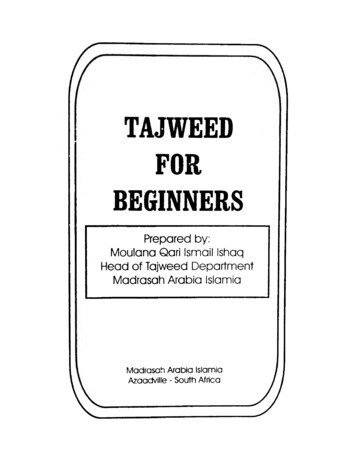
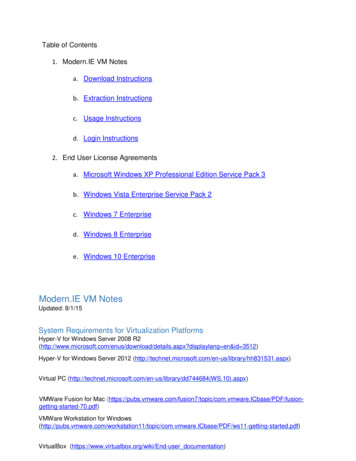





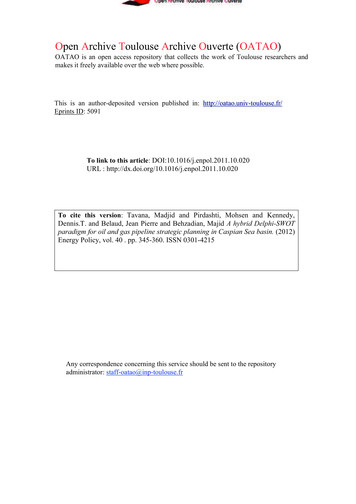
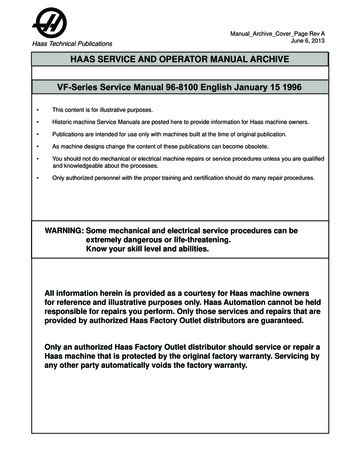
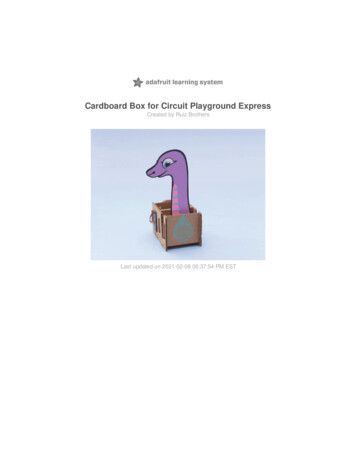
![Archive final version[1]](/img/5/2007.jpg)